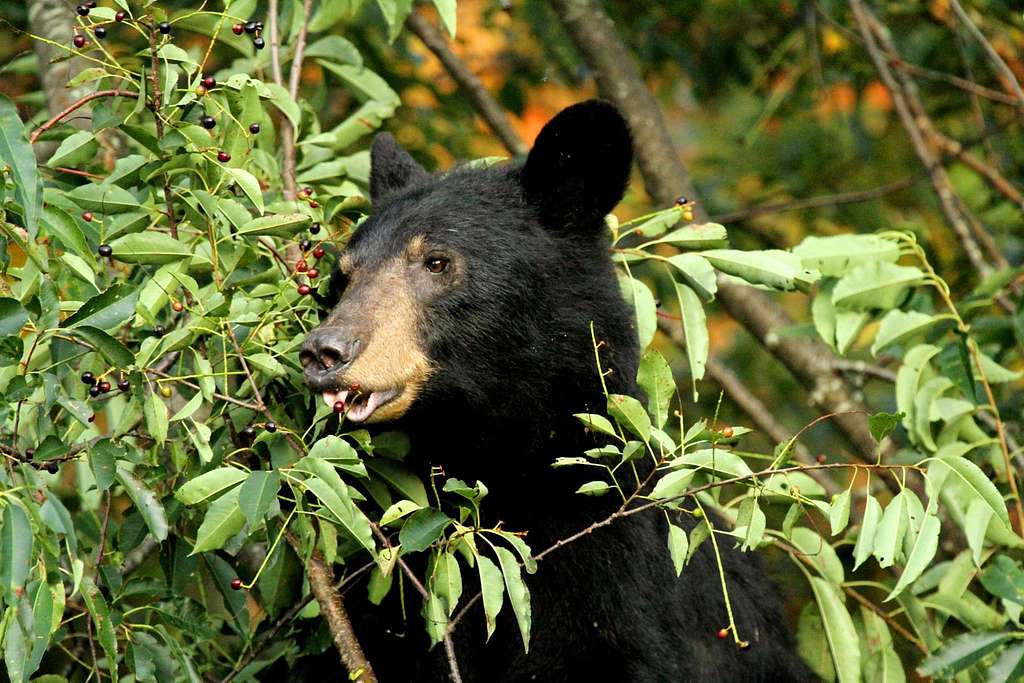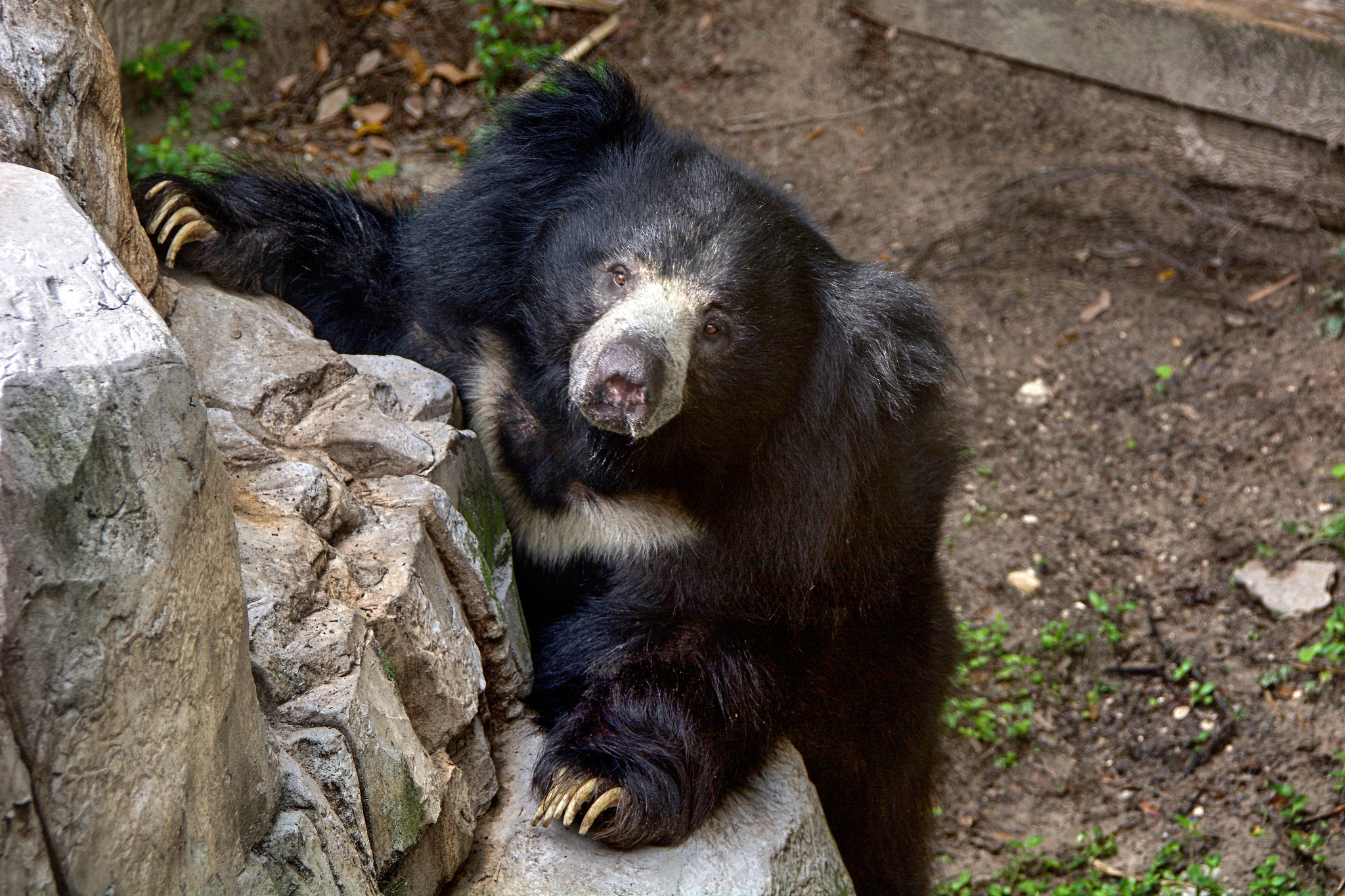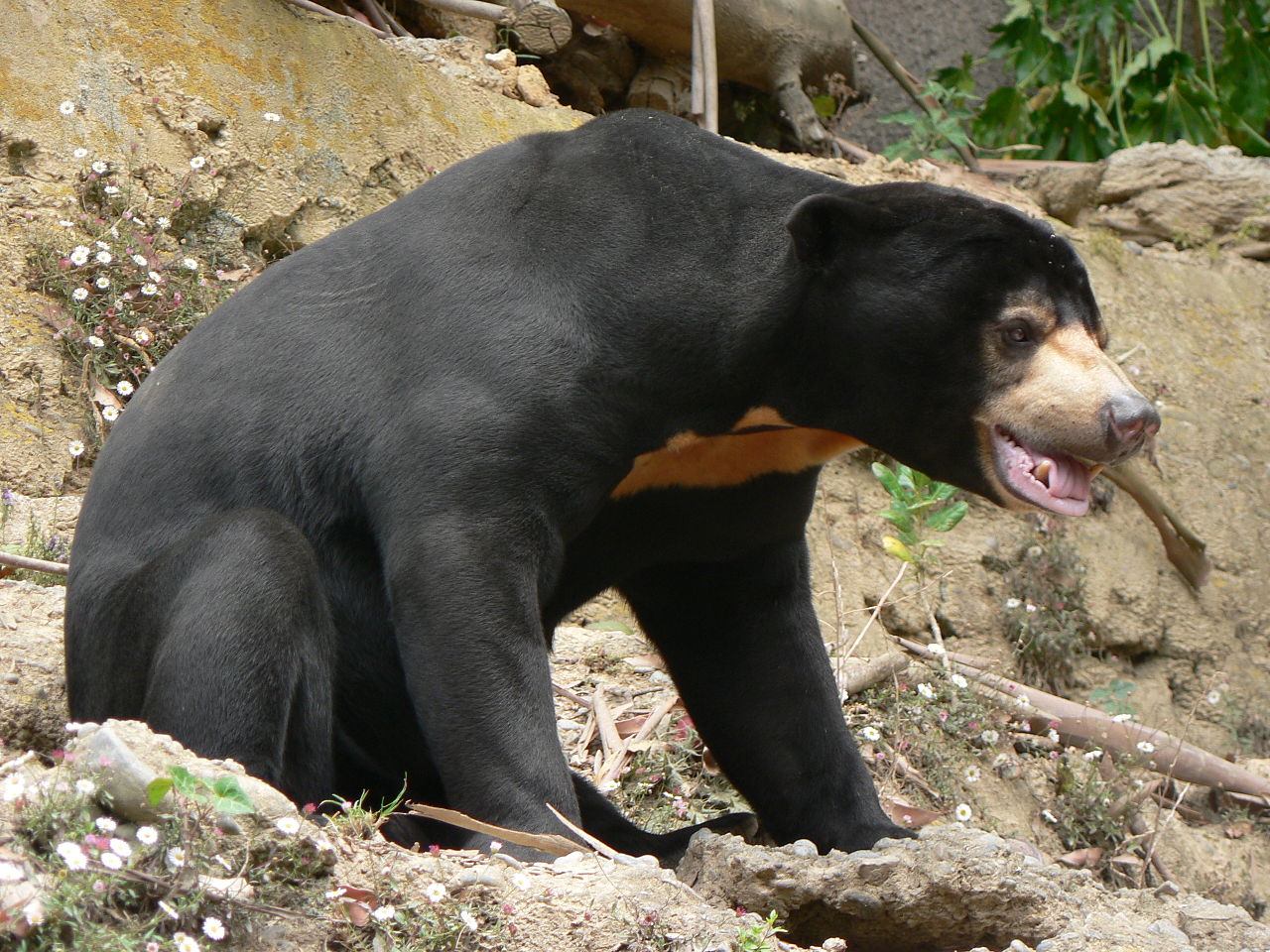
When people think of bears, they usually think of large brown hulking animals. Brown bears are certainly bears, but they aren’t the only ones out there. Blue bears, black and white bears, and many more exist. In fact, there are nine types of bears in the world!
If you’re interested in learning more about the different types of bears, then keep on reading. From their characteristics to their habitats, this guide has you covered!
What is a bear?
A bear is a mammal from the family Ursidae. There are several types of bears, and they live in different habitats worldwide.
While their appearance can vary per type, bears are generally large, furry animals with four legs. They have small, rounded ears and small tails. Their fur color varies, but they all have short, shaggy hair from their head to paws.
Their specific diets also differ according to where they live, but all bears are omnivores. Most of them are opportunistic eaters, but some will hunt down smaller prey. And it might not seem so, but bears are great runners, climbers, and swimmers.
Their average lifespan in the wild of 20 to 30 years is often spent in their “dens”, which are just caves or logs. Bears in captivity can reach up to 35 years of age.
How many types of bears are there?
There are eight extant types of bears, but there were originally nine species of bears. This guide includes all nine types of bears, including some of their popular subspecies.
The International Union for Conservation of Nature (IUCN) monitors the remaining population of these powerful beasts. According to their list, only two out of eight types of bears are of “Least Concern”. The remaining six species are vulnerable or endangered.
Brown Bear
Scientific Name: Ursus arctos
Among the different types of bears, the brown bear is the most popular. The brown bear is a species that lives in different parts of the world, including parts of Russia, Iran, Asia, and the United States. The brown bear also lives in Finland, where it is also the national animal.
Despite its name, not all types of brown bears are brown. Some of them have reddish fur, while others have two-toned fur. Most brown bears range from 4 ft to 9 ft tall, with distinctly large and long claws. In fact, brown bears stand out as the only bear species that can dig through the soil for root crops.
While all types of bears are omnivores, brown bears mostly eat vegetables. In fact, around 90% of a brown bear’s diet comprises plants like berries, acorns, and mushrooms.
The IUCN currently lists brown bears as Least Concern.
Grizzly Bear
Scientific Name: Ursus arctos horribilis

The grizzly bear is usually what people picture when talking about these fuzzy giants. The grizzly bear is a subspecies of the brown bear that lives in various parts of North America. More than half of its known population lives in Alaska.
Those that live near the coast are usually bigger than those who live inland. On average, grizzly bears are usually 6.5 ft long and weigh around 290 to 400 lbs.
As brown bears, grizzly bears also have brown fur, with darker hair on their legs. White to blond fur usually covers their back, and they also have a muscular hump on their shoulders.
Another name for the grizzly bear is the North American brown bear.
Kodiak Brown Bear
Scientific Name: Ursus arctos middendorffi

The Kodiak brown bear is another subspecies of the brown bear. Also known as the Alaskan brown bear, the Kodiak brown bear lives in the Kodiak Archipelago in southwest Alaska.
It is the largest among the brown bears, and it is one of the two largest among all types of bears. Kodiak bears usually weigh around 660 to 1,300 lbs. Aside from their enormous size, Kodiak bears look like most brown bears. Its fur ranges from brown to blonde, and its diet comprises mostly plants.
The Kodiak bear has a population of around 3,500, which the Alaska Department of Fish and Game closely monitors.
Tibetan Blue Bear
Scientific Name: Ursus arctos pruinosus

Among the different types of bears, the Tibetan blue bear is the rarest. The Tibetan blue bear is a brown bear subspecies native to Southeast Alaska. It lives in the eastern Tibetan Plateau, where sightings are rare.
Despite being a brown bear subspecies, the Tibetan blue bear is mostly bluish-black. It has a beige chest and a reddish blonde face.
Other names for the Tibetan blue bear include Himalayan blue bear, Himalayan snow bear, Tibetan brown bear, and horse bear.
American Black Bear
Scientific Name: Ursus americanus

Another type of bear is the American black bear or simply black bear. Black bears are endemic to North America, and they are the most widely distributed among all types of bears. You can find black bears in Alaska, Canada, and Mexico.
Like most types of bears, black bears are solitary creatures. They typically live alone in forests, but they will sometimes travel to nearby campsites or rural areas in search of food.
People often entertain the idea of brown bears vs black bears. Because some black bears also have brown fur, the two can get confusing. However, black bears do not have a hump on their shoulders. They are also smaller than brown bears as most black bears are only 120 to 550 lbs.
American black bears are the second and last bear species considered as Least Concern. Some subspecies of the American black bear include the Olympic black bear, cinnamon bear, and the glacier bear.
Asian Black Bear
Scientific Name: Ursus thibetanus

As its name suggests, the Asian black bear, or Asiatic black bear, is a bear species that lives in Asia. Asian black bears usually prefer living in high-altitude areas of forests.
Asian black bears are around 3.9 to 6 ft long and have shaggy black fur. This bear species also has a white V-shaped mark on its chest. Because of this, people often also call them “moon bears”.
Compared to other types of bears, Asian black bears are quite aggressive. They do not take kindly to humans who get too close. Countries like Japan, India, and Nepal have all reported cases of Asian black bear attacks.
Despite this, Asian black bears are the most common bear species in performances. They are easy to tame and are intelligent creatures who can learn tricks fast. They are also popular pets in Vietnam.
Some popular subspecies of the Asian black bear are the Japanese black bear, Formosan black bear, and Tibetan black bear.
Polar Bear
Scientific Name: Ursus maritimus

The polar bear is a species endemic to the Arctic. Unlike most bears, the polar bear is considered a marine mammal because it spends more time at sea than on land. Most of them live along sea ice, where they hunt seals.
Among the different types of bears, the polar bear easily stands out. Not only does it have pure white fur, but it is also the largest extant species on earth. The polar bear usually weighs around 770 to 1,540 lbs.
Unfortunately, polar bears are considered Vulnerable by the IUCN. Several factors such as climate change, mining, and pollution all threaten the population of these bears.
Do polar bears hibernate?
The answer to this common question is no, polar bears do not hibernate. They are fully adapted to living in the Arctic. Their white fur allows them to camouflage against the snow, and they also have great night vision.
Polar bears also have shorter claws, making it easier for them to run on ice. Unlike most types of bears, polar bears mostly eat meat, so a lack of plants during winter is no problem for them.
However, pregnant polar bears will often go into a state similar to hibernation. They isolate themselves in their dens and do not leave or eat. The warm and safe environment helps them give birth better.
Panda Bear
Scientific Name: Ailuropoda melanoleuca
For many, the panda bear is the cutest among the types of bears. The panda bear, or “giant panda”, is a panda with a round body and distinct black and white fur. Its head and body are white, while its limbs, shoulders, and ears are all black. It also has black spots on its eyes.
Giant pandas mostly eat bamboo. However, bamboo provides them with very little energy, so they have to eat around 9 to 14 kg of bamboo per day.
This bear species is endemic to China, with most of them living in the mountain ranges of Sichuan. Along with the Chinese dragon, the panda bear is also China’s national animal.
Qinling Panda
Scientific Name: Ailuropoda melanoleuca qinlingensis

Contrary to popular belief, not all panda bears are black and white. The Qinling panda is a subspecies of the panda bear, and it has a light and dark brown coat. It has a light brown head and body, while its limbs, ears, and eye patches are dark brown.
As its name suggests, the Qinling panda lives in Qinling, or the Qin Mountains, of Shaanxi Province, China. Their exact population is unknown, but their population ranges between 200 and 300 in the wild.
Scientists first discovered the Qinling panda in the 1960s, but they did not recognize it as an official subspecies until 2005.
Sloth Bear
Scientific Name: Melursus ursinus

Contrary to popular belief, the sloth bear is not slow or lazy like a sloth. The sloth bear is a fast runner with long, thick claws. In fact, many consider the sloth bear one of India’s most dangerous wild animals. This bear species lives in the dry grasslands of India, Nepal, and other areas in South Asia.
Unlike most types of bears, the sloth bear has a long lower lip and a gap between its upper teeth. To feed, it uses its mouth like a vacuum cleaner to suck termites into its mouth. The sloth bear also has large, powerful claws that help it dig into soil and trees for termites.
Unfortunately, the IUCN lists the sloth bear as vulnerable. Around 20,000 sloth bears live in the wild, and deforestation and poaching continue to threaten these numbers.
Sun Bear
Scientific Name: Helarctos malayanus

Among all the types of bears, the sun bear is the smallest. It is around 2 ft tall at the shoulder, and it only weighs 55 to 140 lbs.
Most sun bears have black fur, but some also have grey or red coats. Sun bears also have a distinct beige to orange mark on their chest. While the mark is not uniformly circular, it is bright against the sun bear’s darker fur. Because of this, scientists dubbed this species the “sun bear”.
You’ll find this bear species climbing the trees of Southeast Asia’s tropical forests. The sun bear has a stocky build with strong claws perfect for climbing. They often sleep or sunbathe on tree branches as high as 23 ft off the ground.
As omnivores, sun bears feed on ants, termites, and fruits. They also eat larger prey like birds and deer.
Giant Short-Faced Bear
Scientific Name: Arctodus simus

If still alive today, the giant short-faced bear would be the largest among the types of bears. Unfortunately, the short-faced bear became extinct around 12,000 years ago.
The giant short-faced bear, or the “bulldog bear”, is a bear species that once lived in Minnesota, Alaska, and areas near the Mississippi River. This bear species was a powerful predator that grew up to 5 ft tall and weighed over 1,500 lbs. When it stood on its hind legs, it could almost reach 12 ft tall.
The giant short-faced bear mostly consumed meat, and it hunted down deer, horses, and sloths. It does hunting easily as it was a fast runner, with scientists concluding it could run over 64 kph.
Unfortunately, the species could not outrun climate change. Around 12,000 years ago, climate change and pollution led to the extinction of several herbivores, including the prey of giant short-faced bears. Loss of habitat and food eventually caused it to become extinct.
Spectacled Bear
Scientific Name: Tremarctos ornatus

The spectacled bear is the only living relative of the giant short-faced bear. Most spectacled bears have black to brown fur, with spectacled marks on their face and chest. These marks differ on each bear, and some might not have marks at all.
You’ll find spectacled bears in Venezuela, Colombia, and other parts of Southern America. Like most types of bears, their diet mostly comprises plants. They feed on fruits, cactus, and palm nuts. However, spectacled bears will occasionally eat rabbits, mice, and cattle.
Other names for the spectacled bear include Andean bear, Andean short-faced bear, and mountain bear.
Was this page helpful?
Our commitment to delivering trustworthy and engaging content is at the heart of what we do. Each fact on our site is contributed by real users like you, bringing a wealth of diverse insights and information. To ensure the highest standards of accuracy and reliability, our dedicated editors meticulously review each submission. This process guarantees that the facts we share are not only fascinating but also credible. Trust in our commitment to quality and authenticity as you explore and learn with us.


